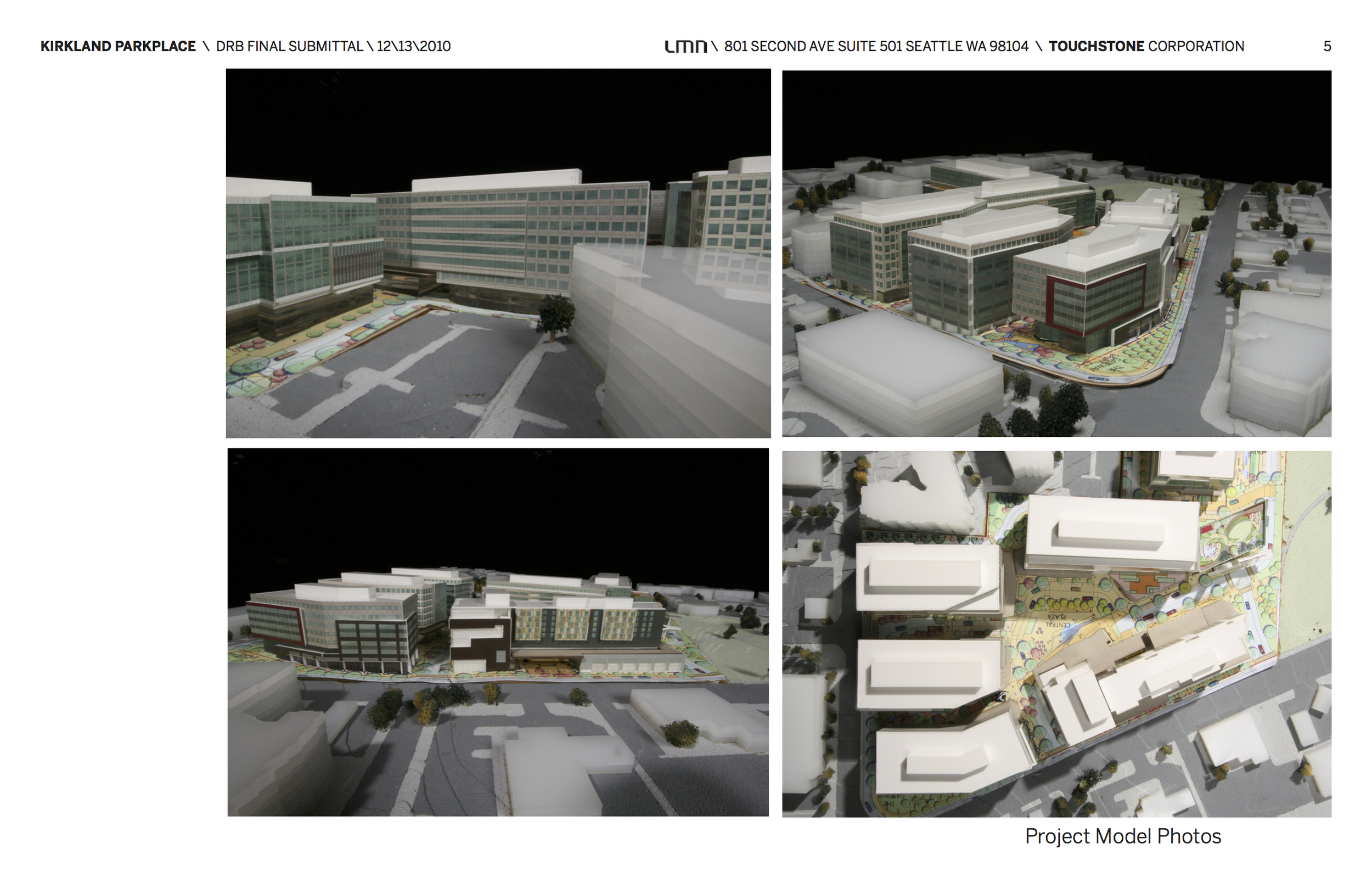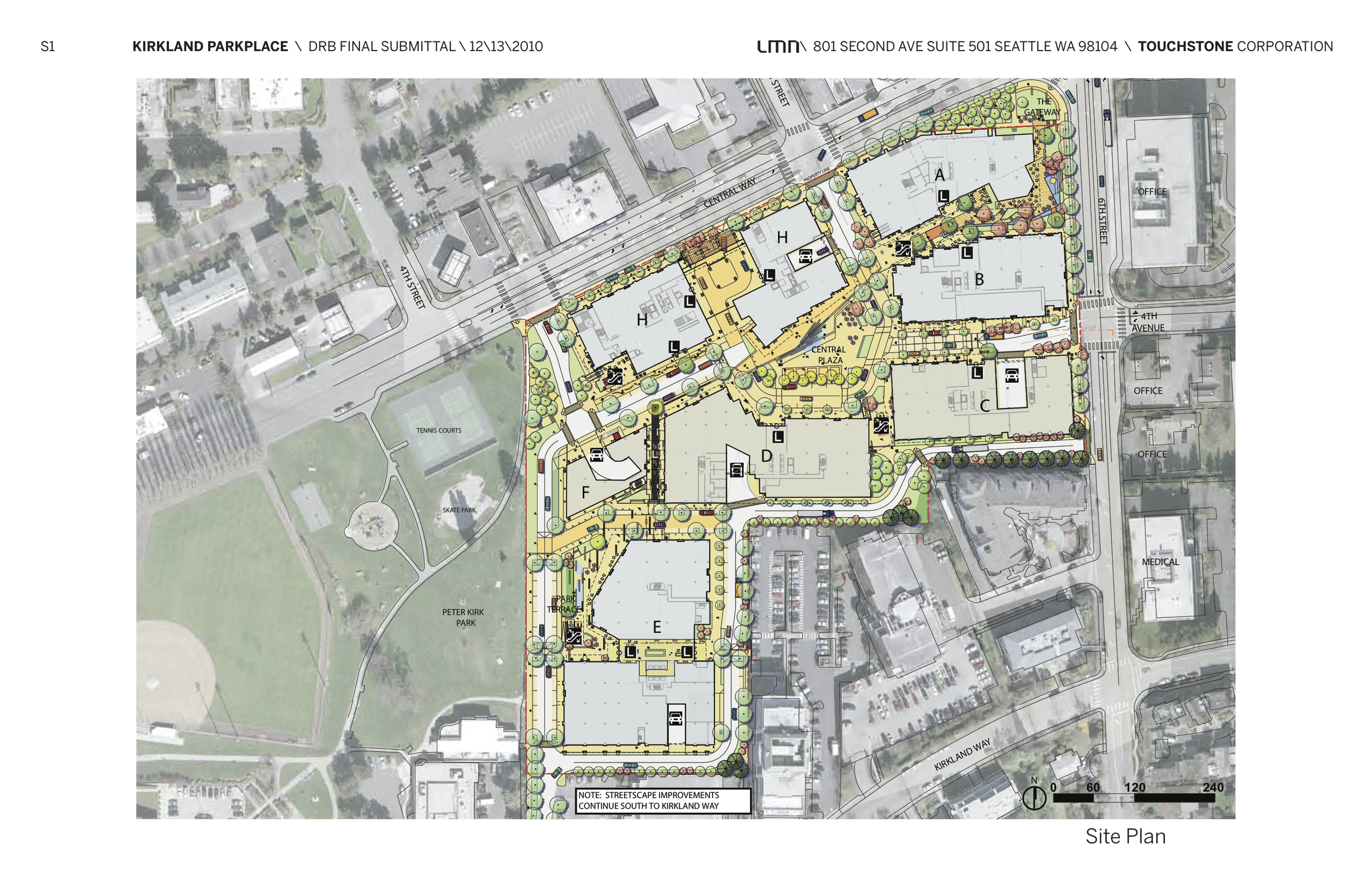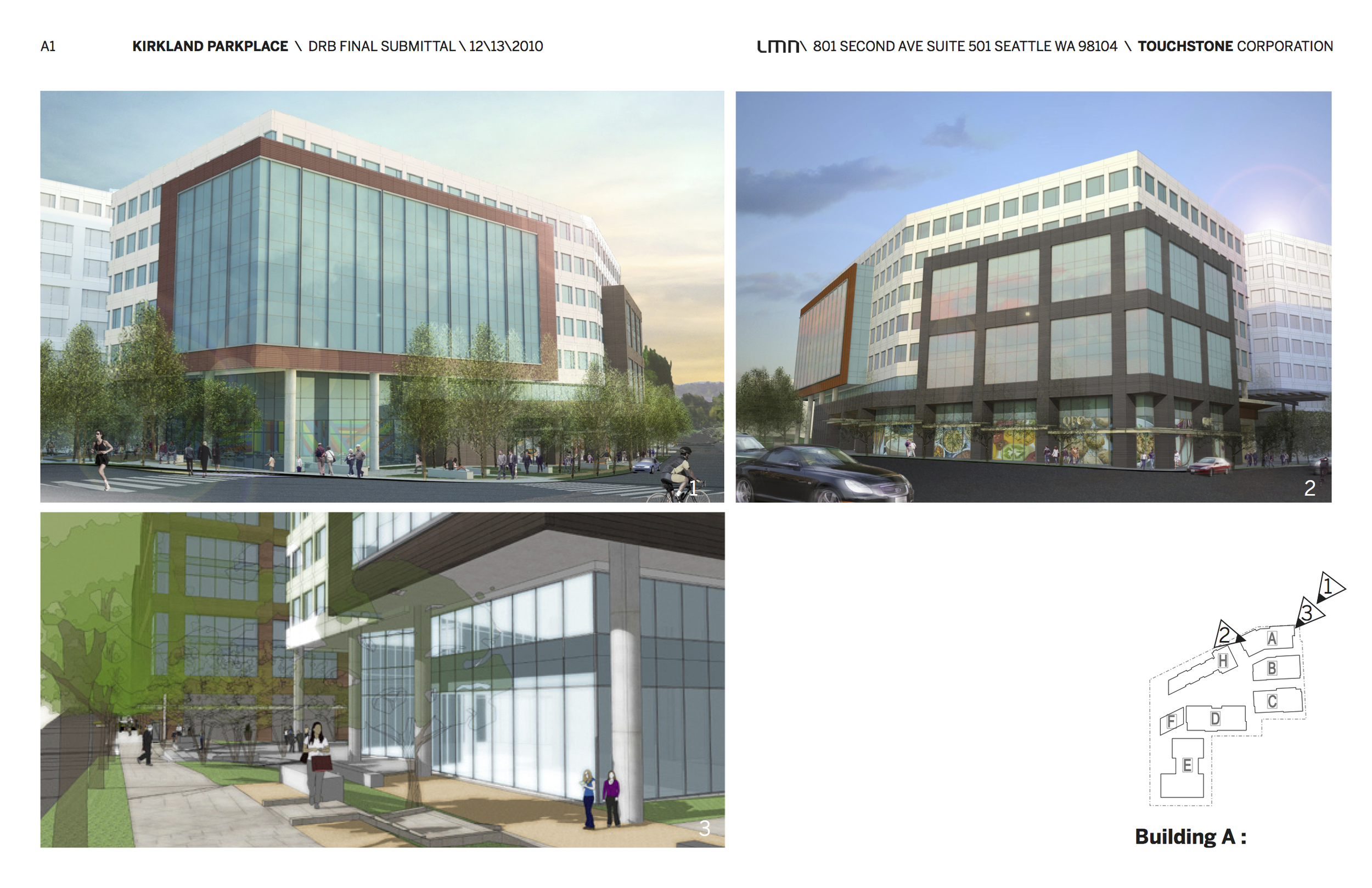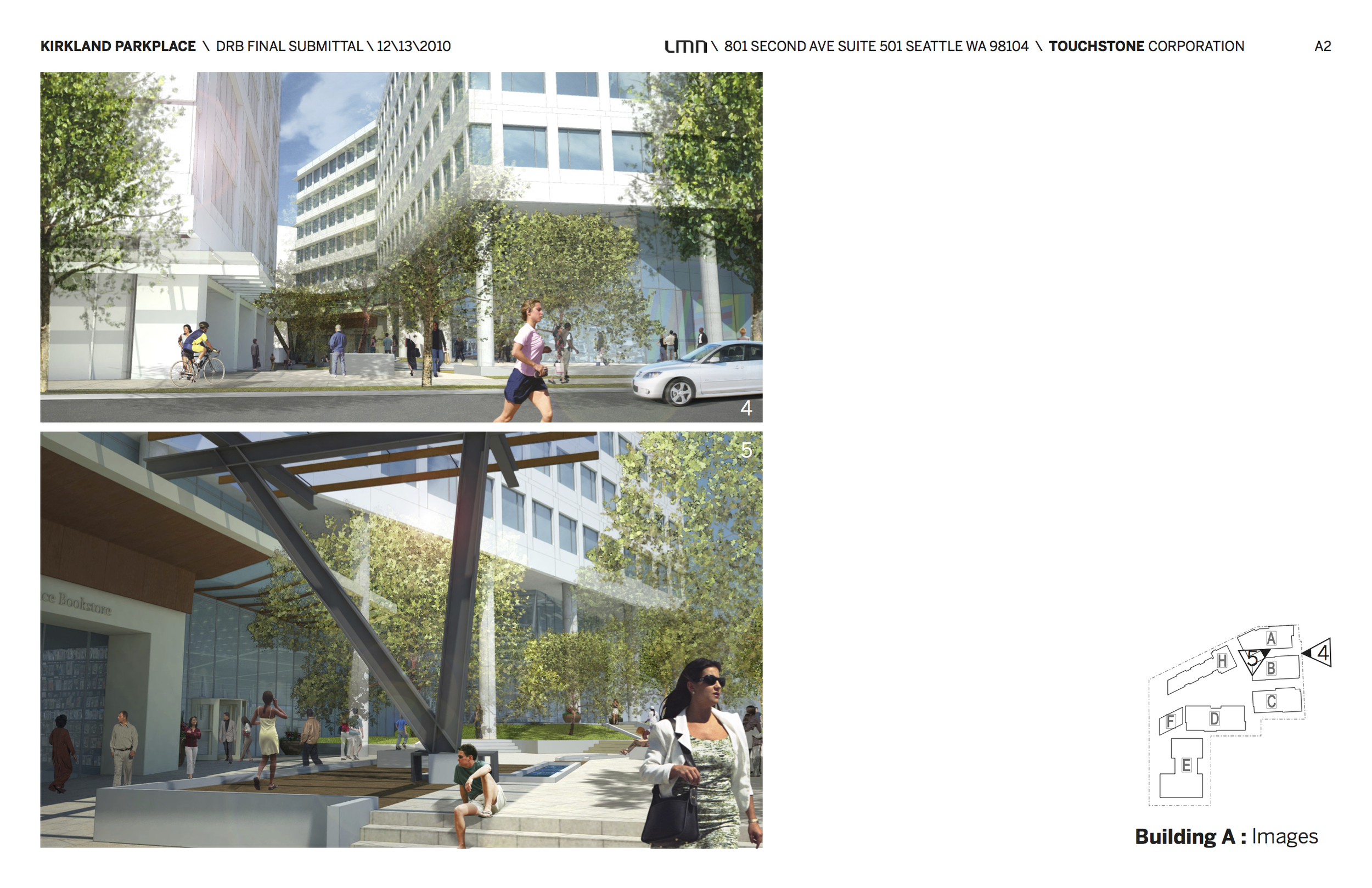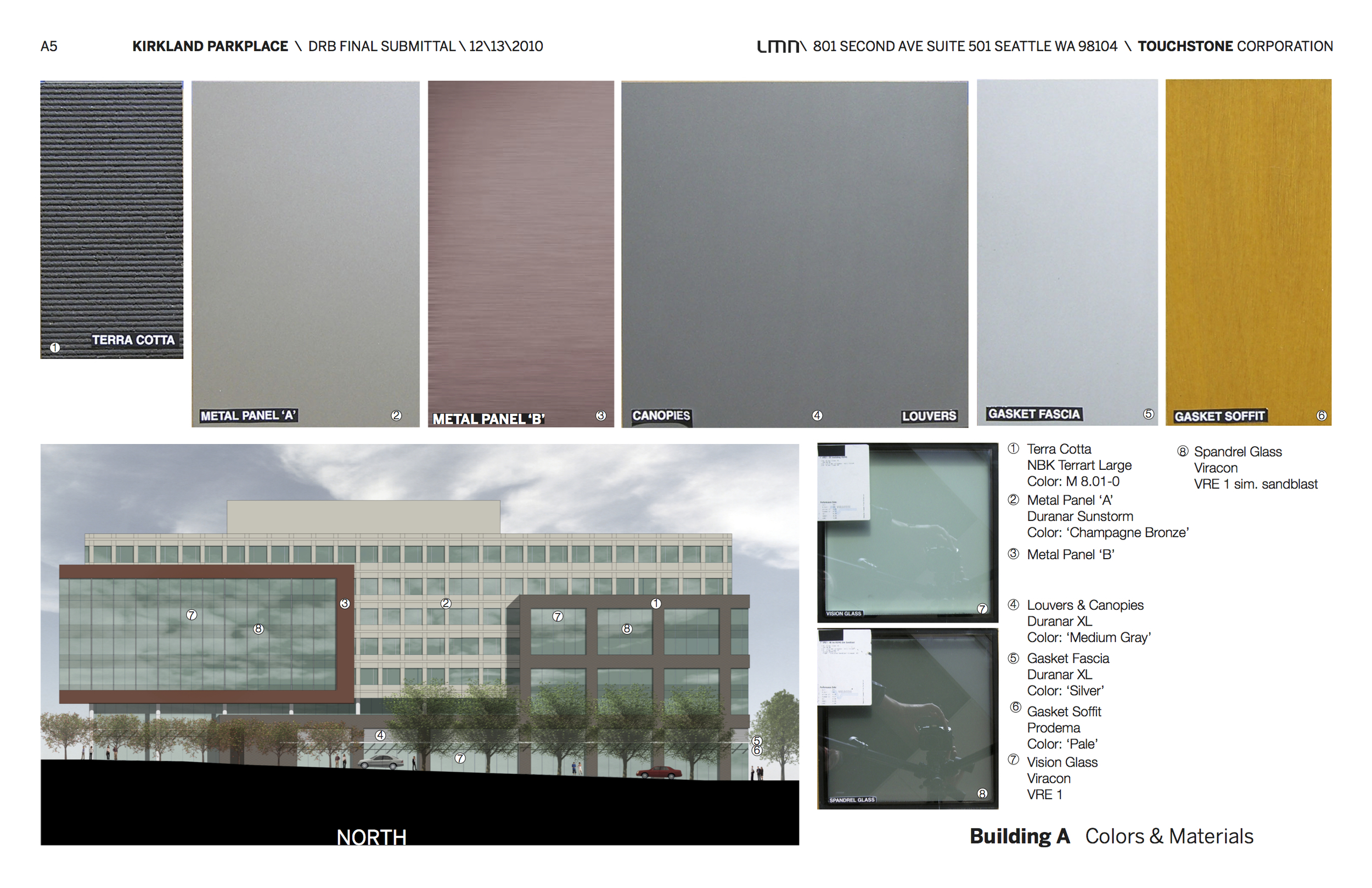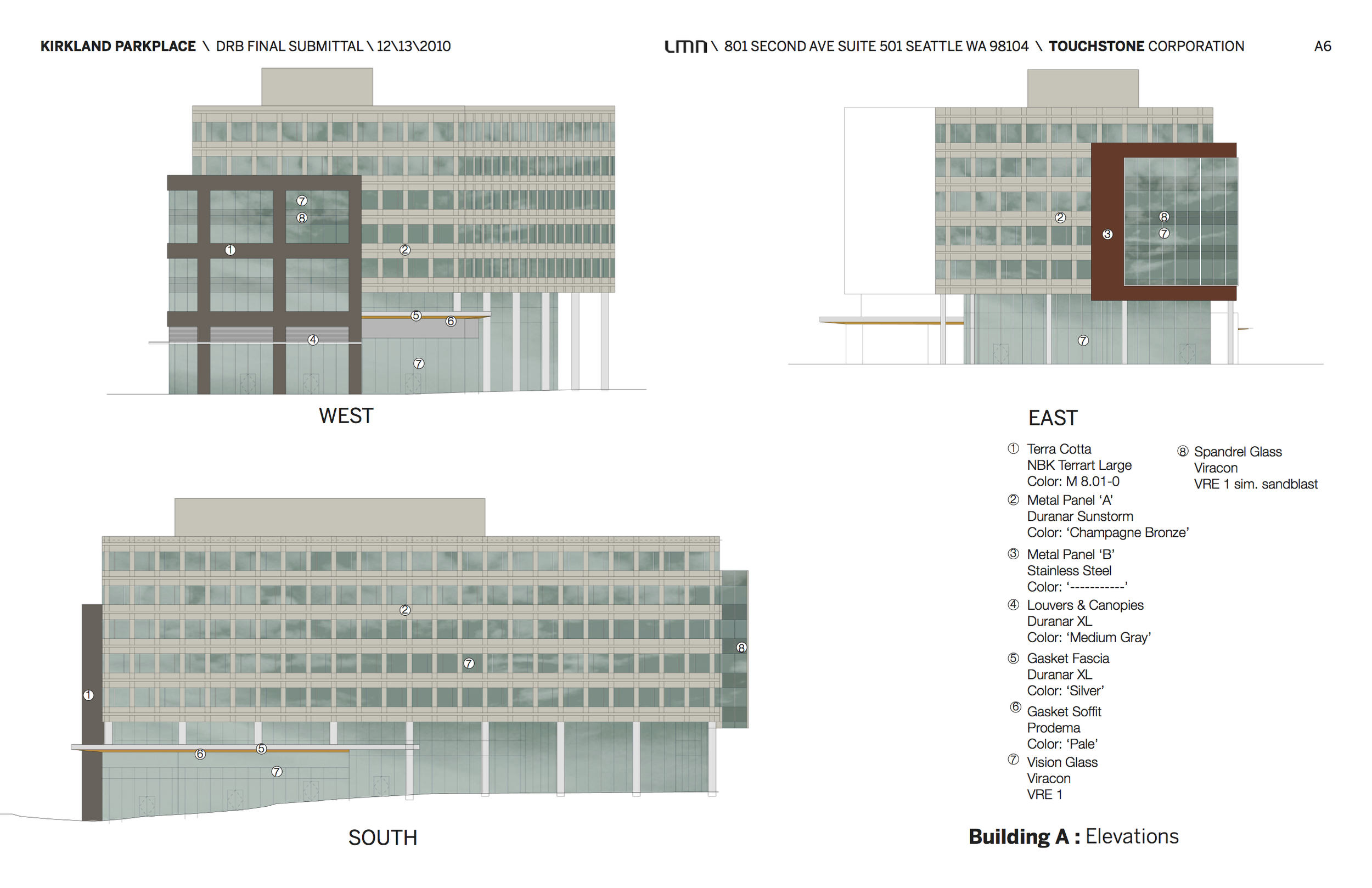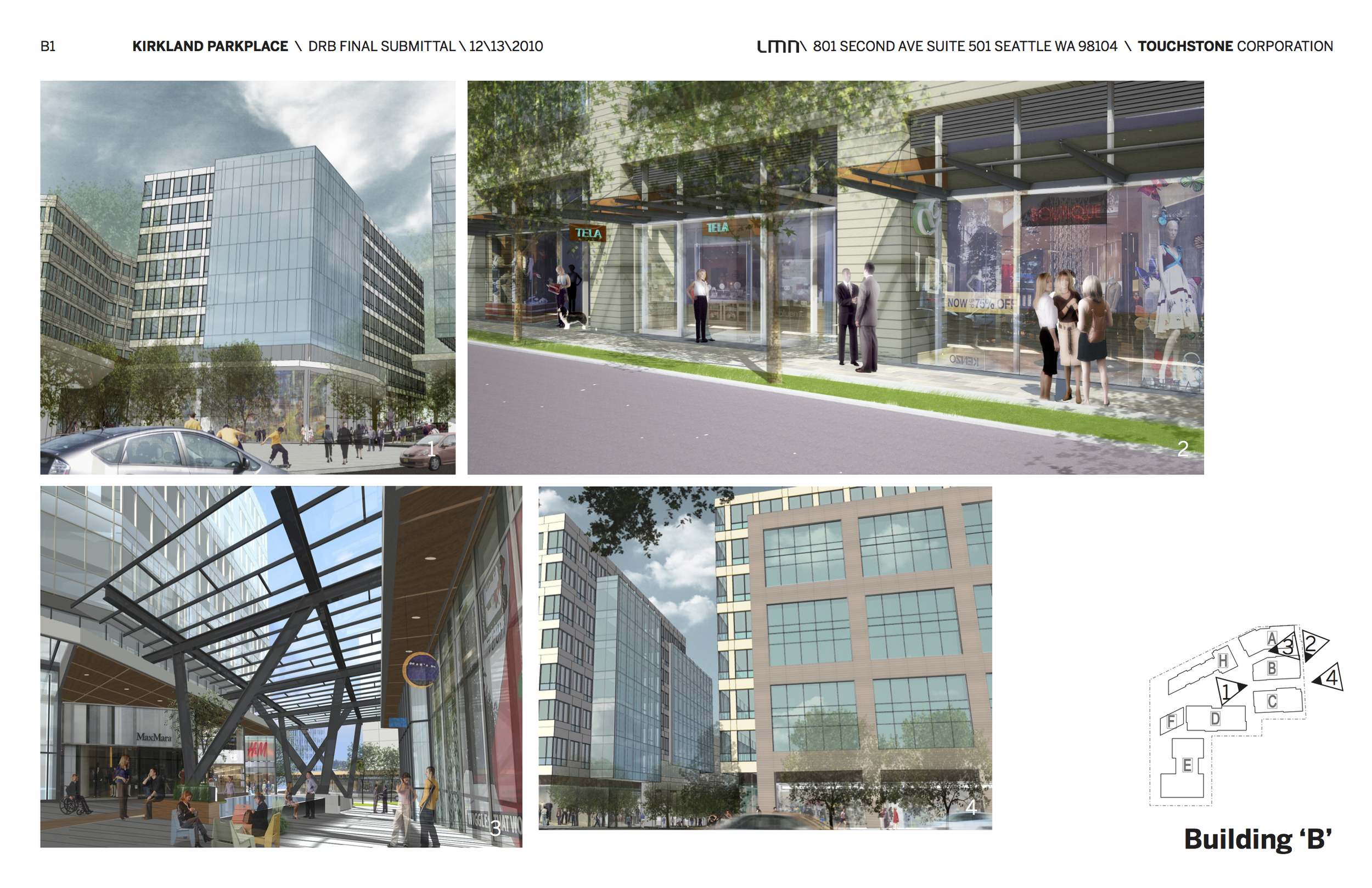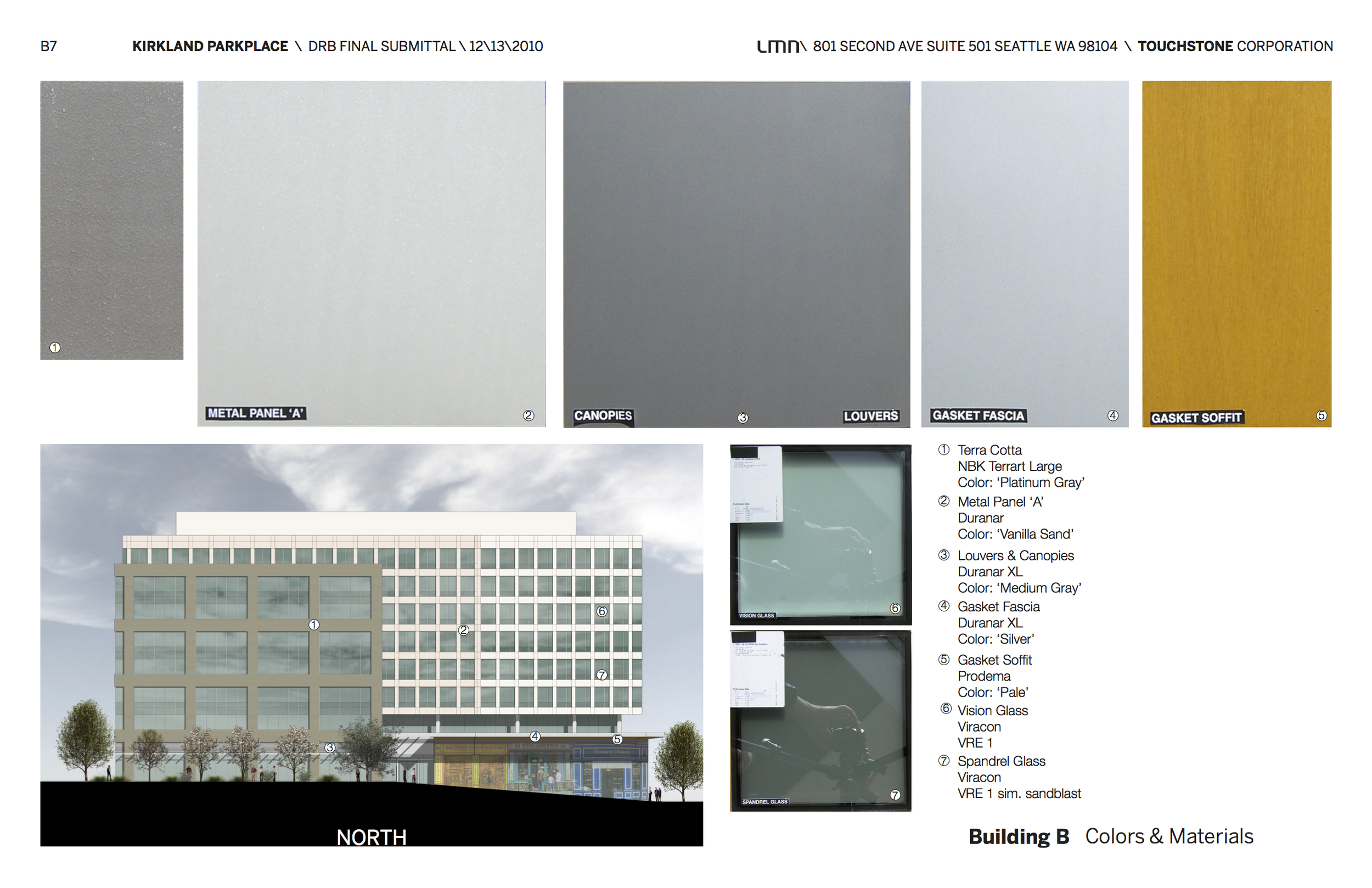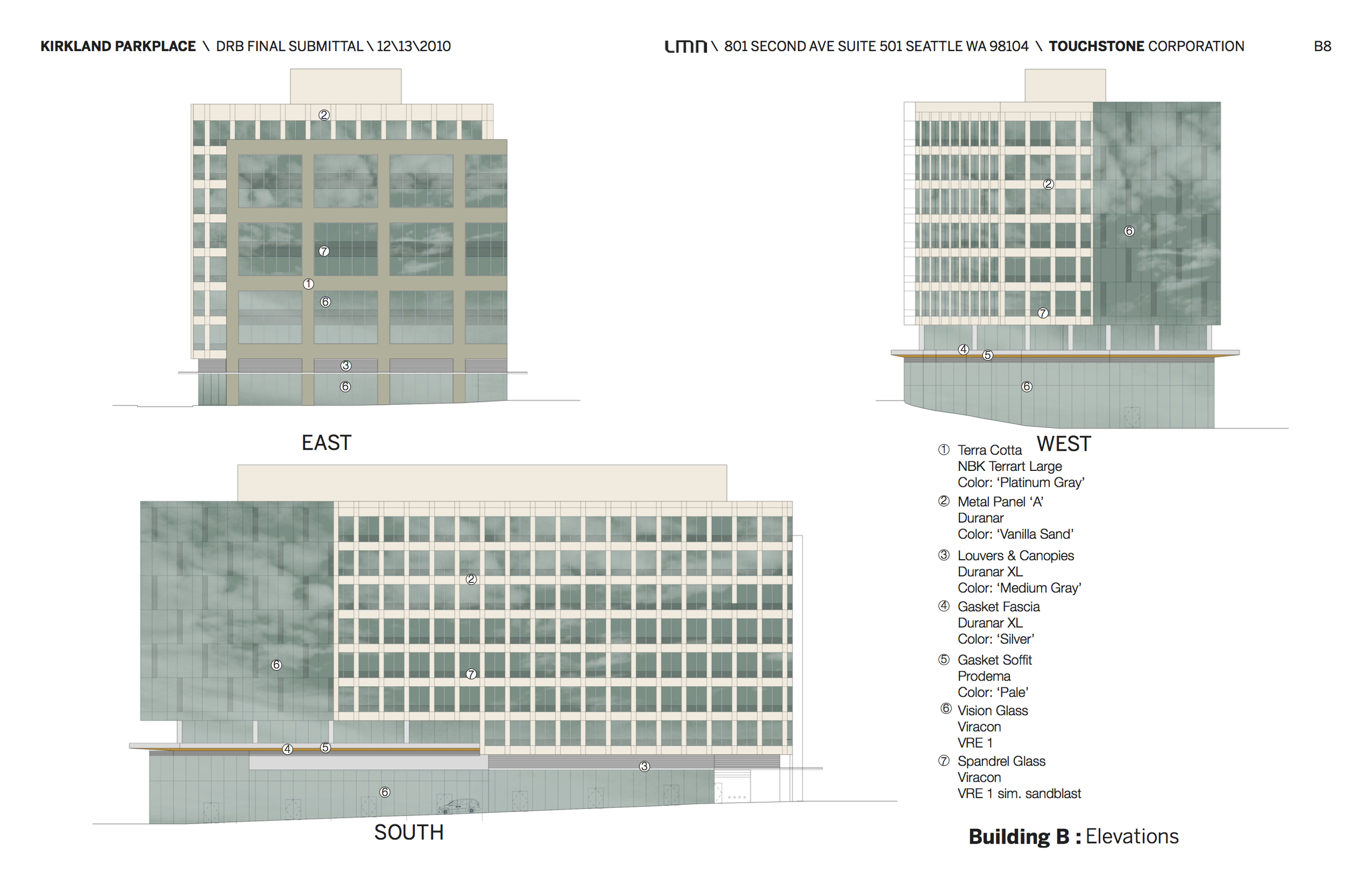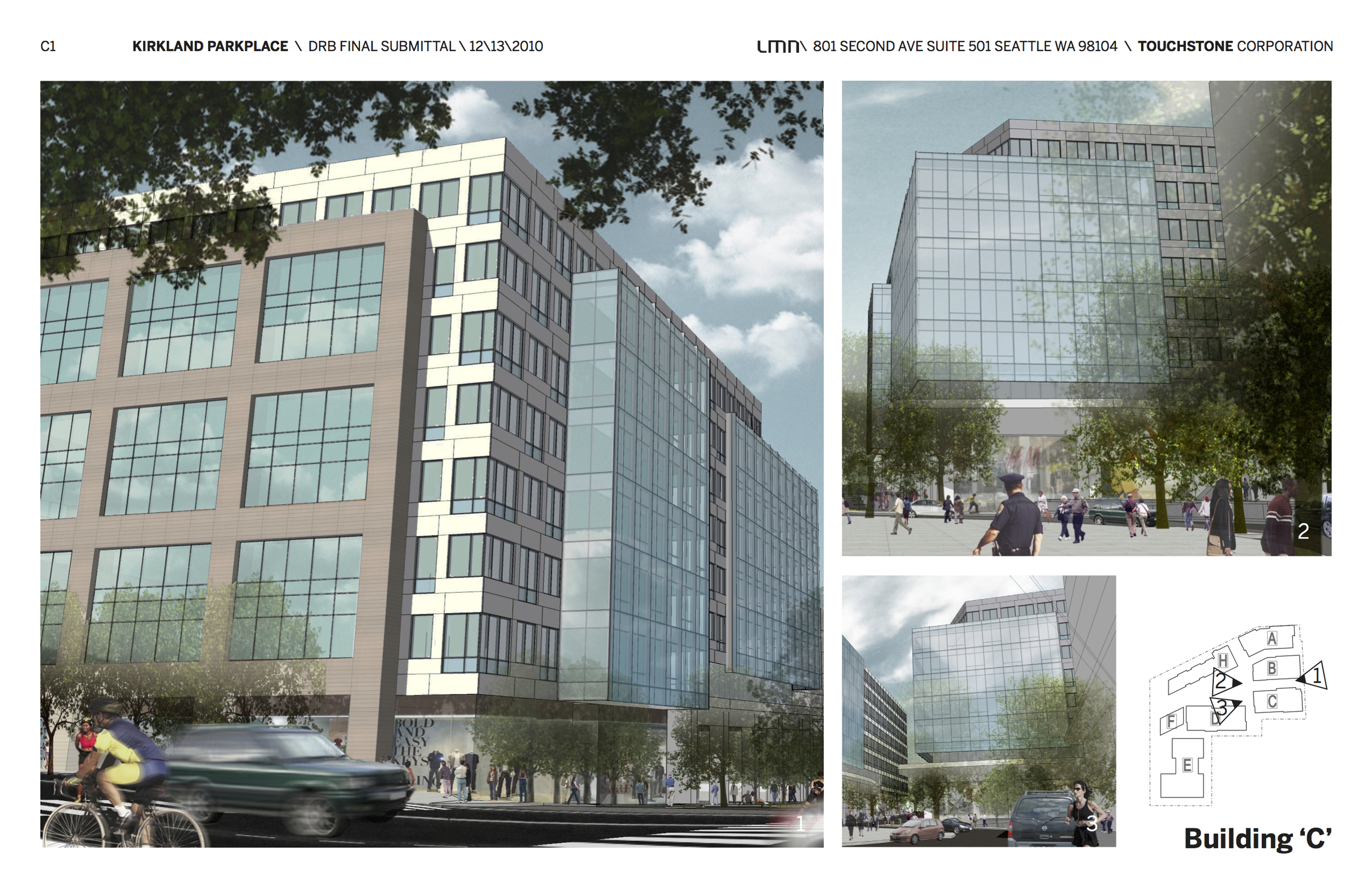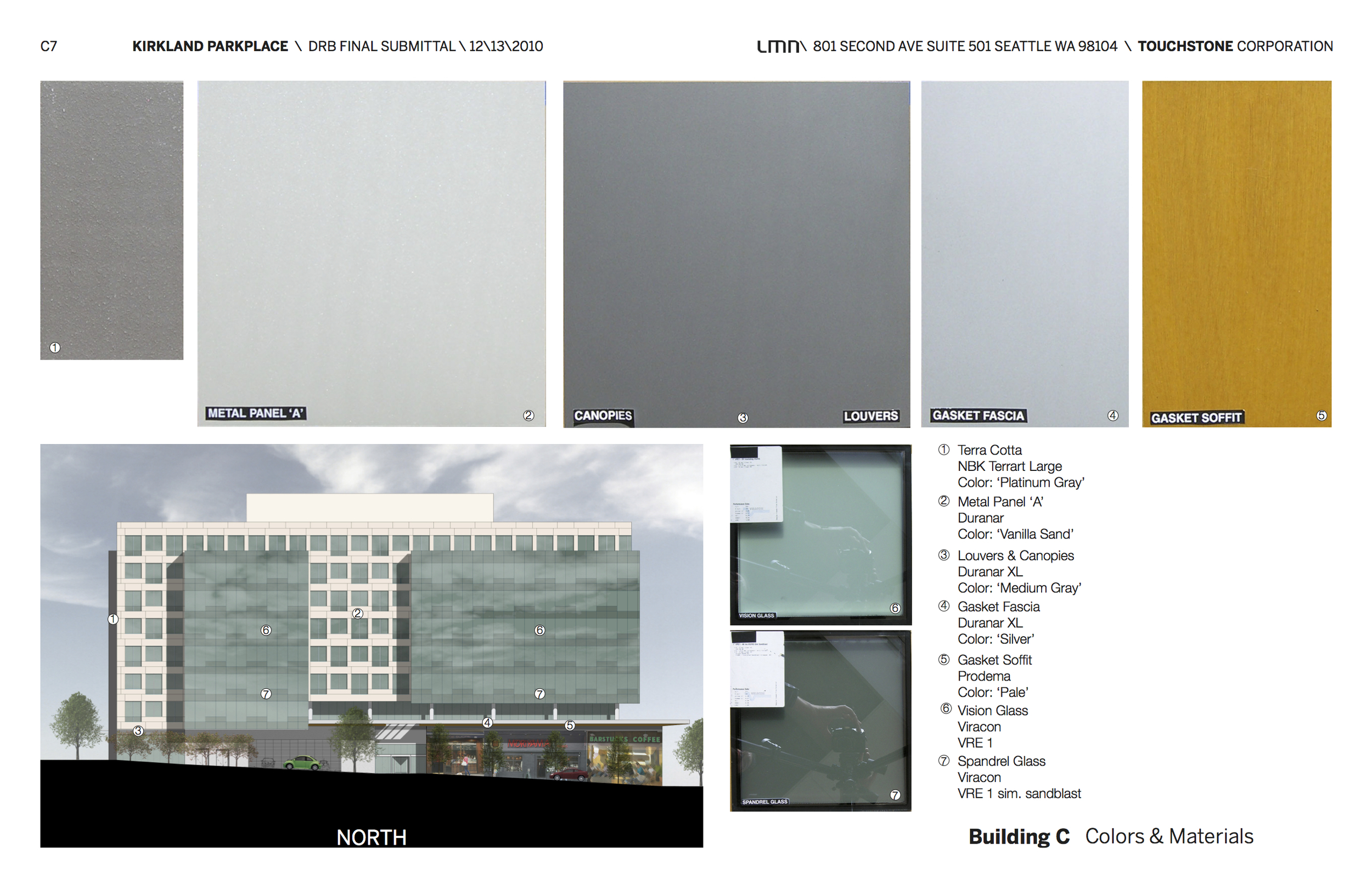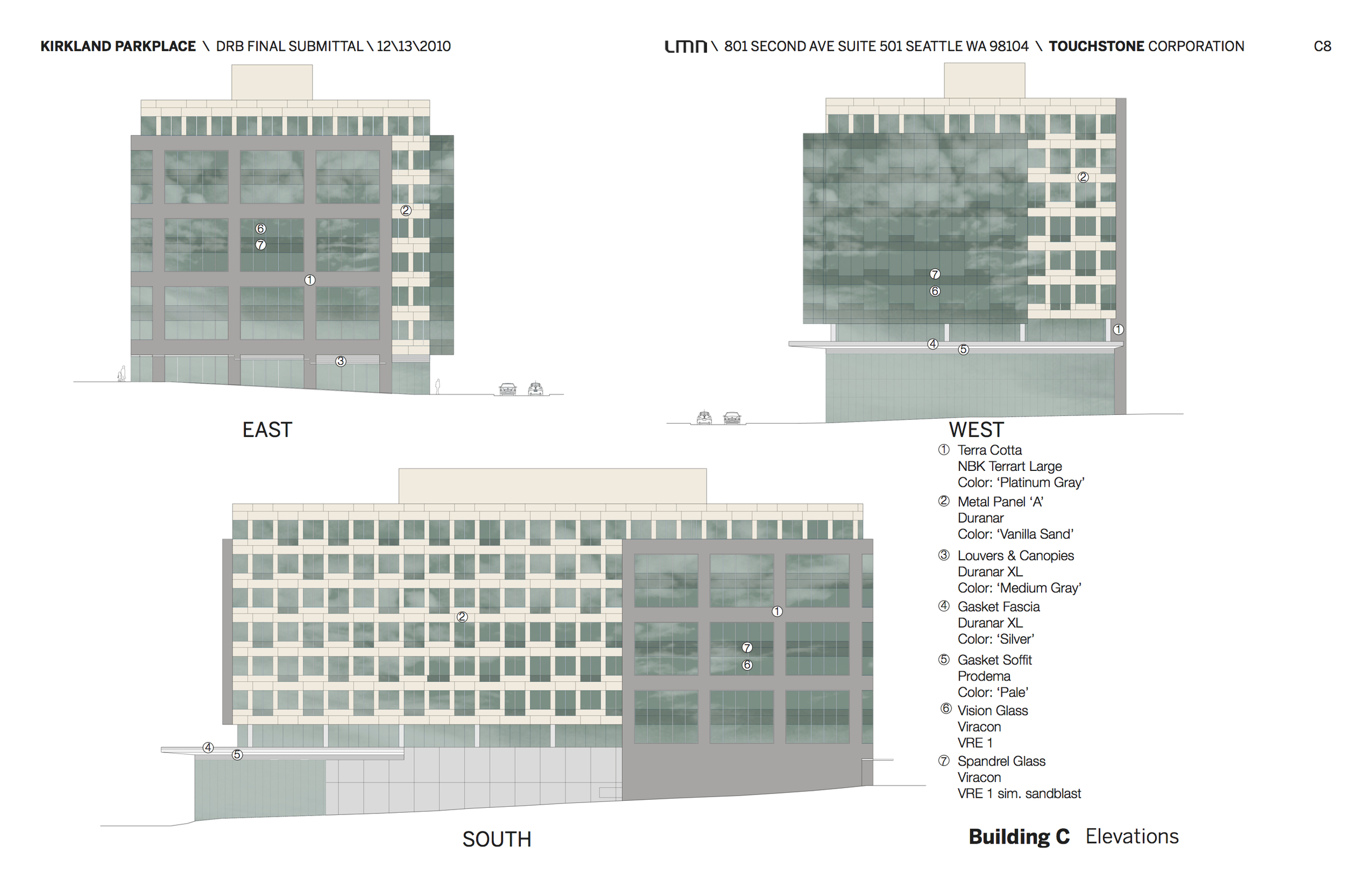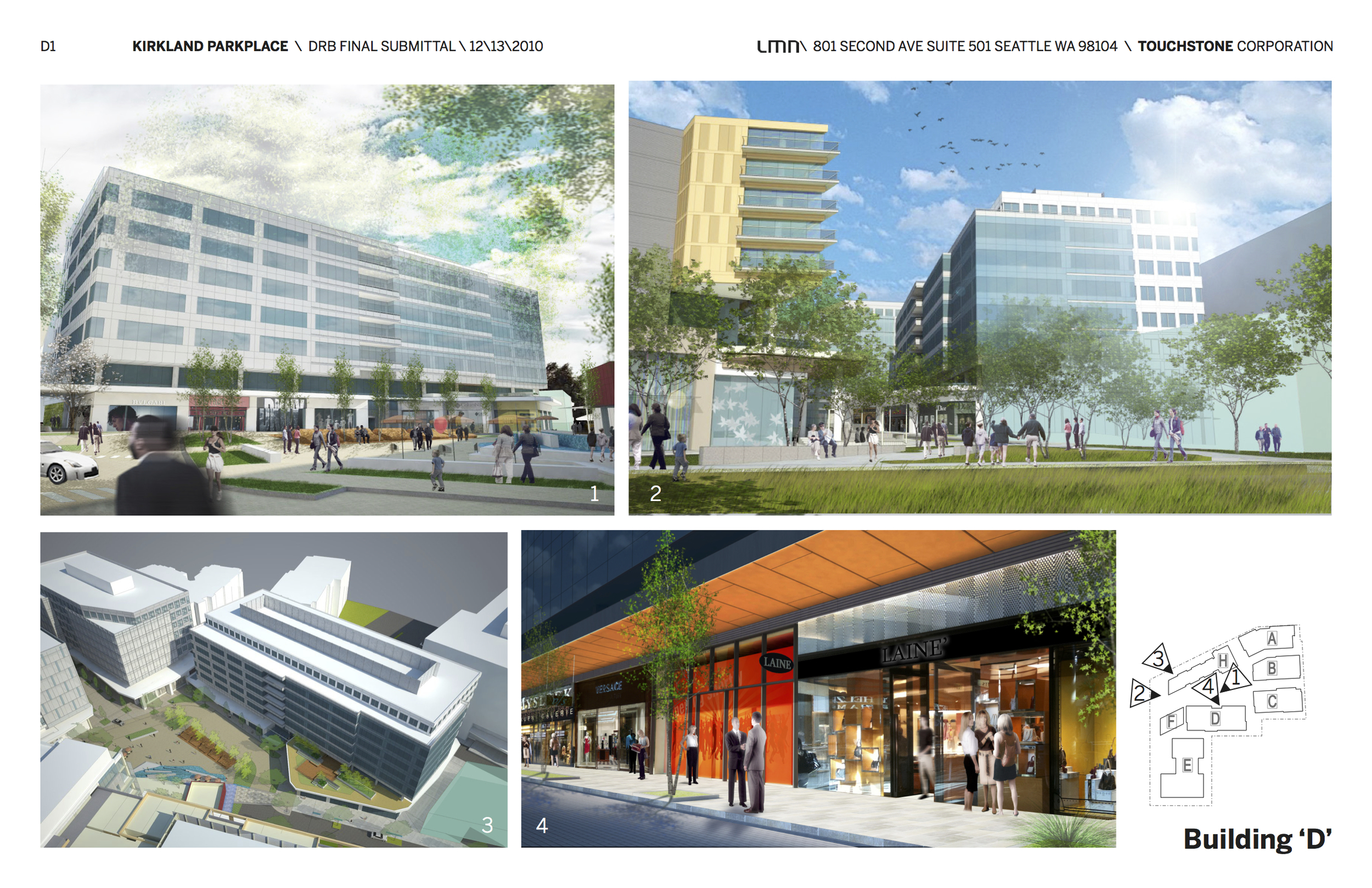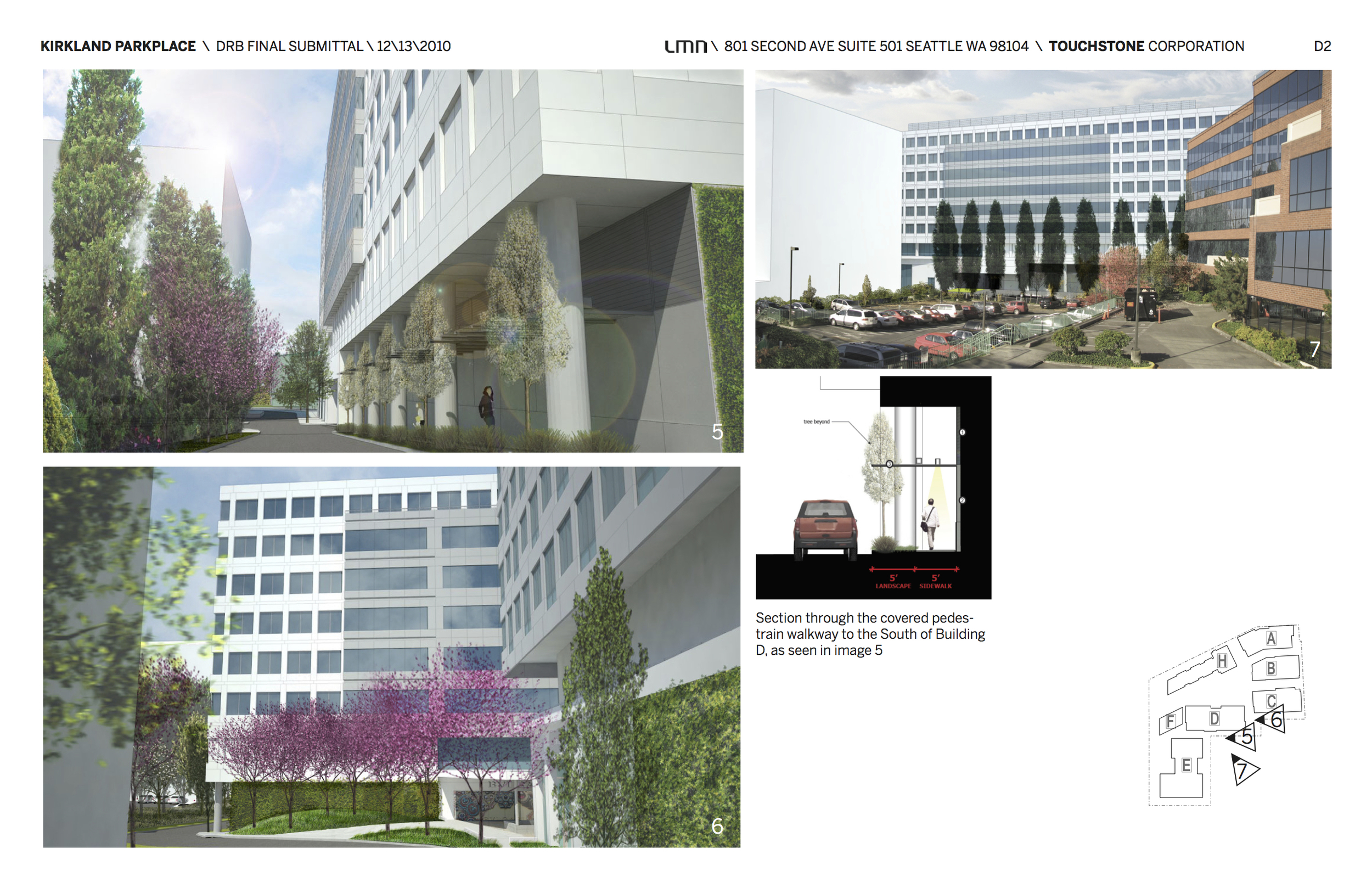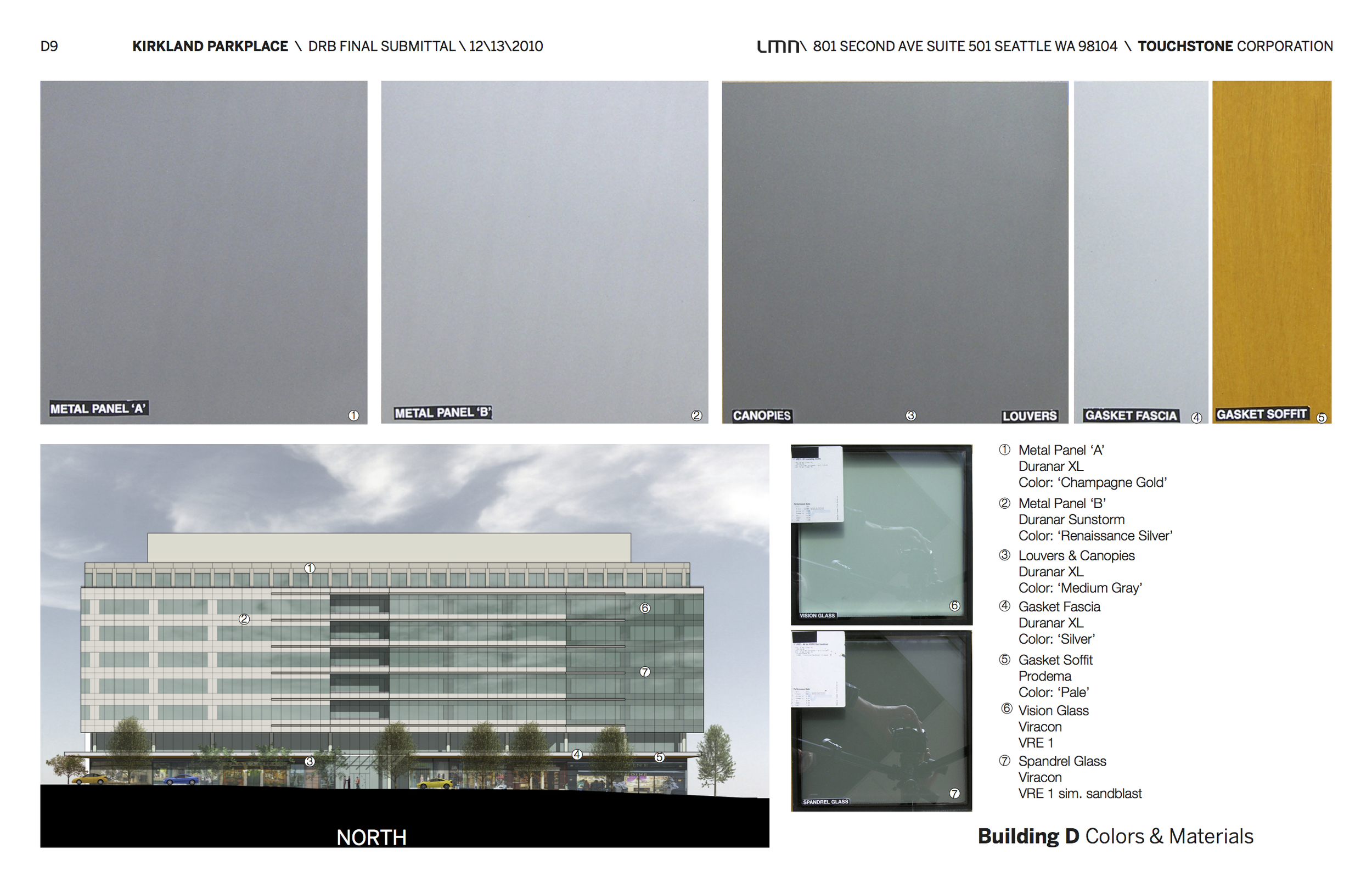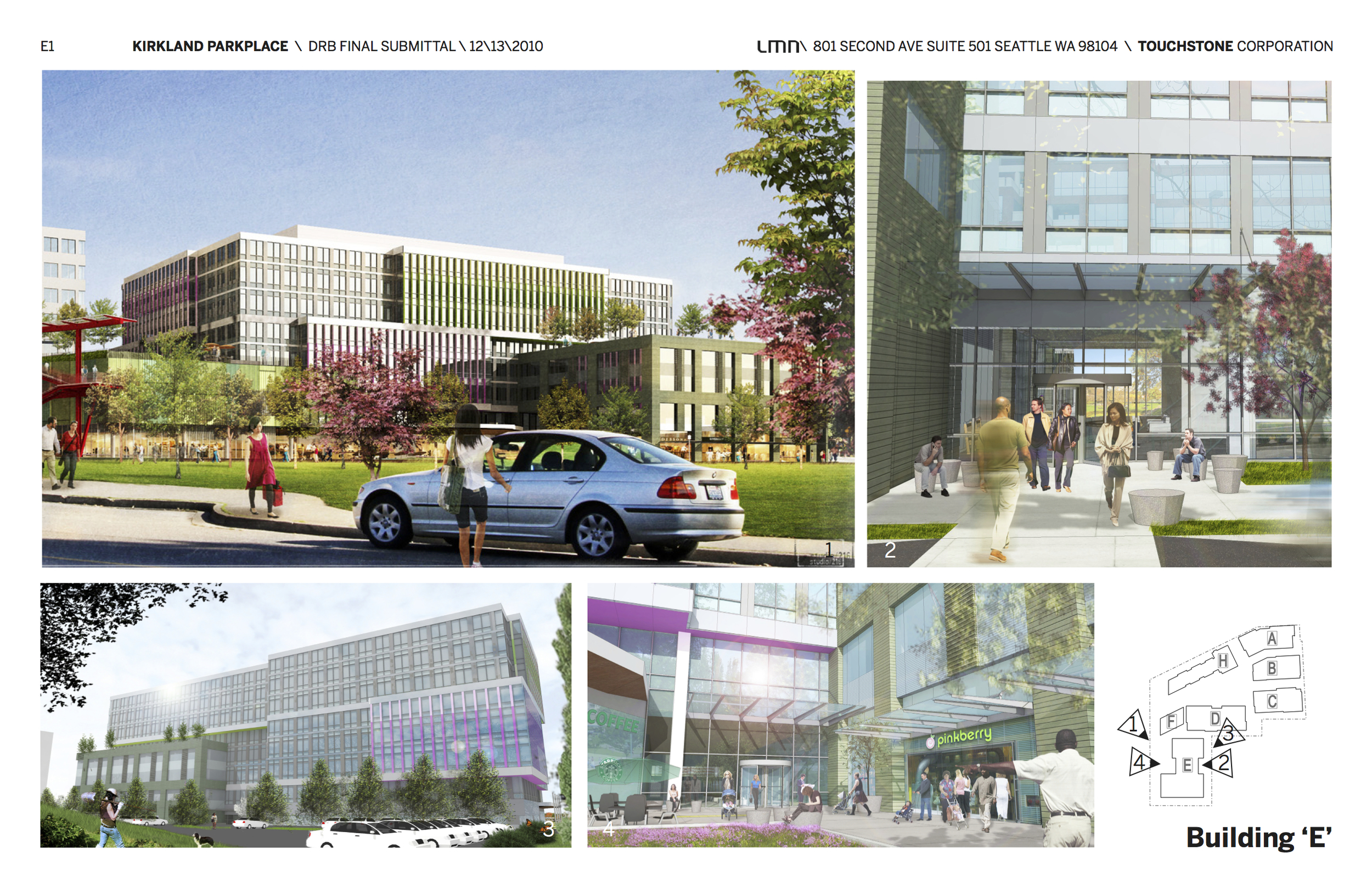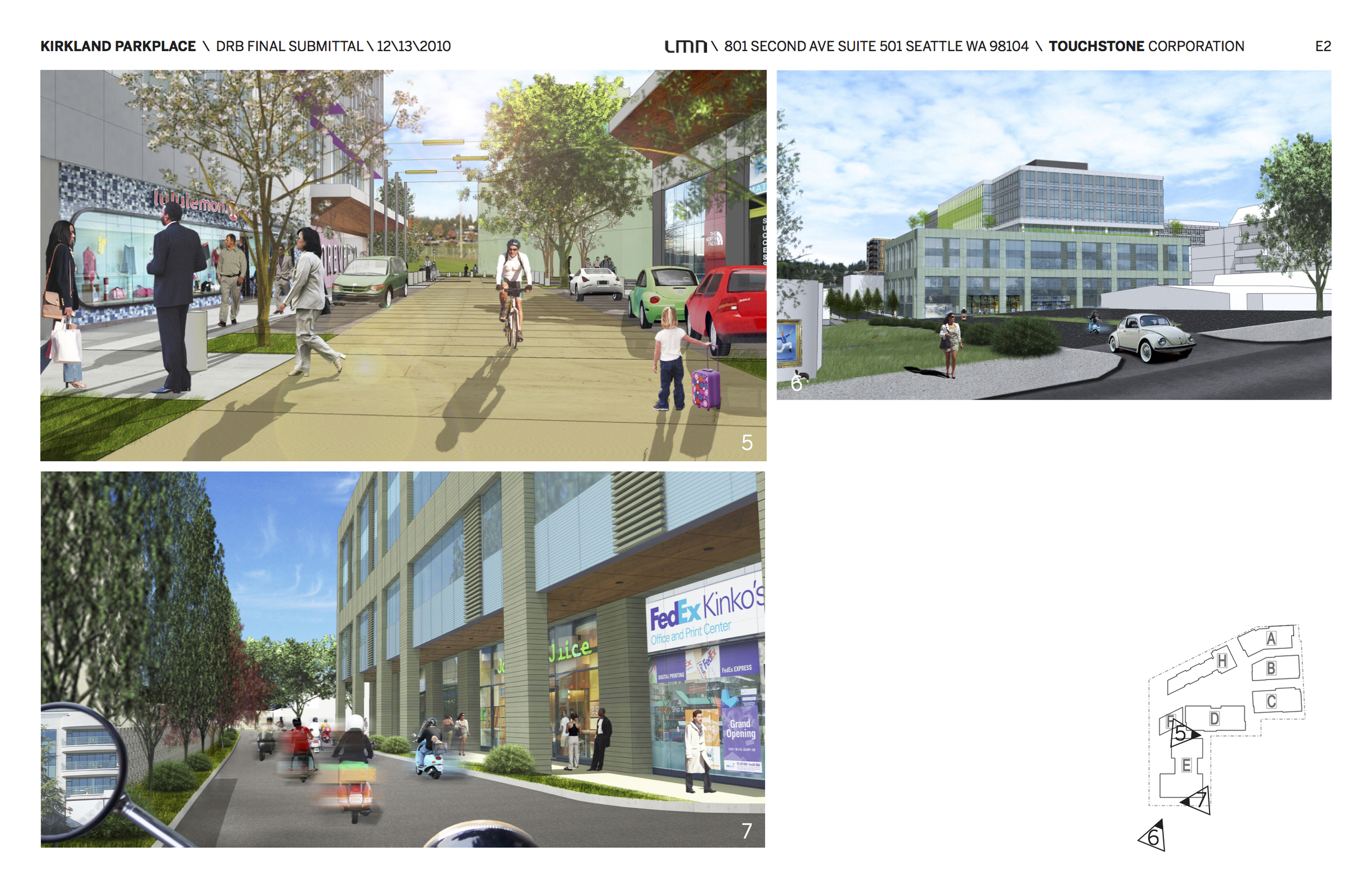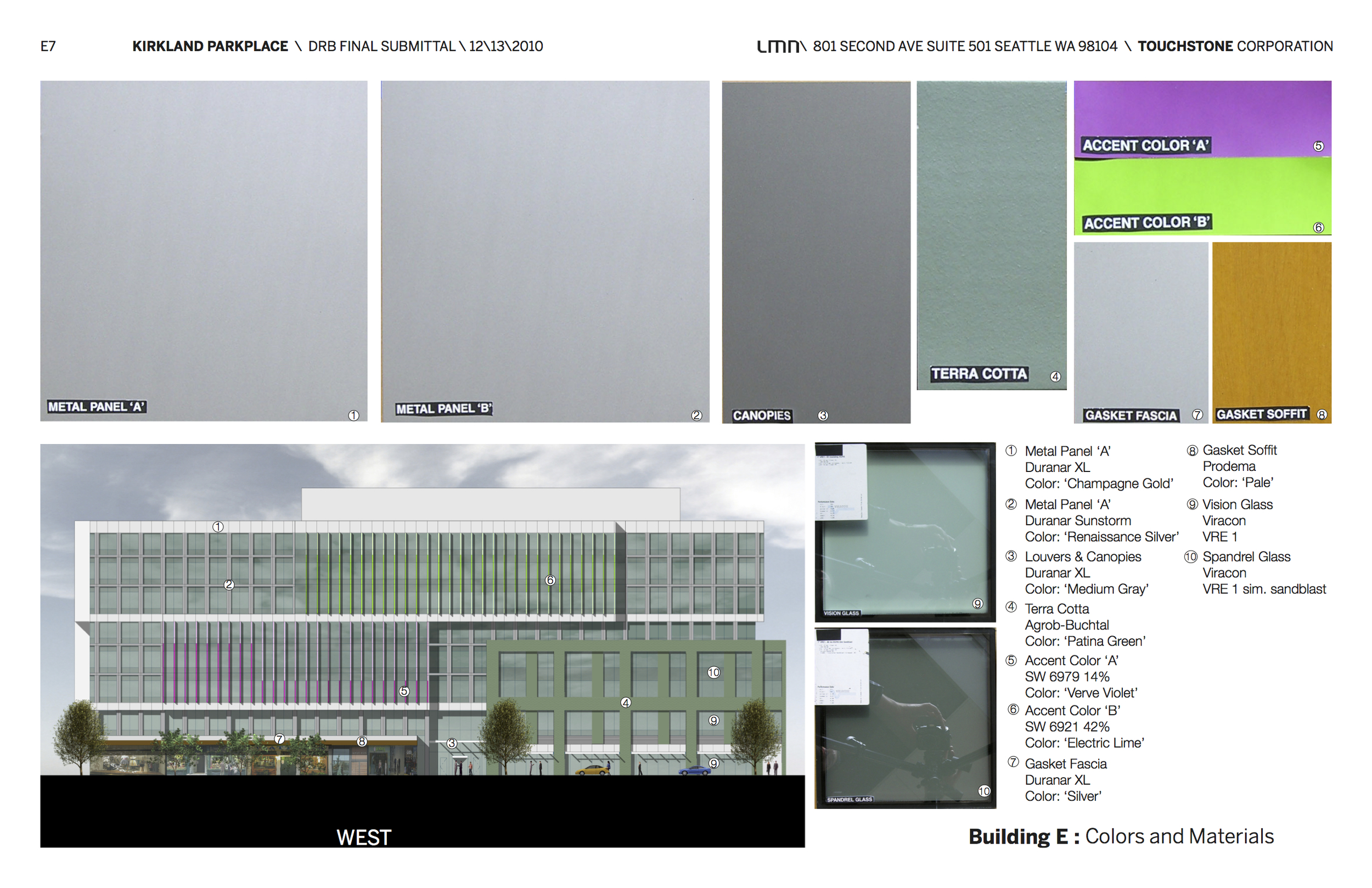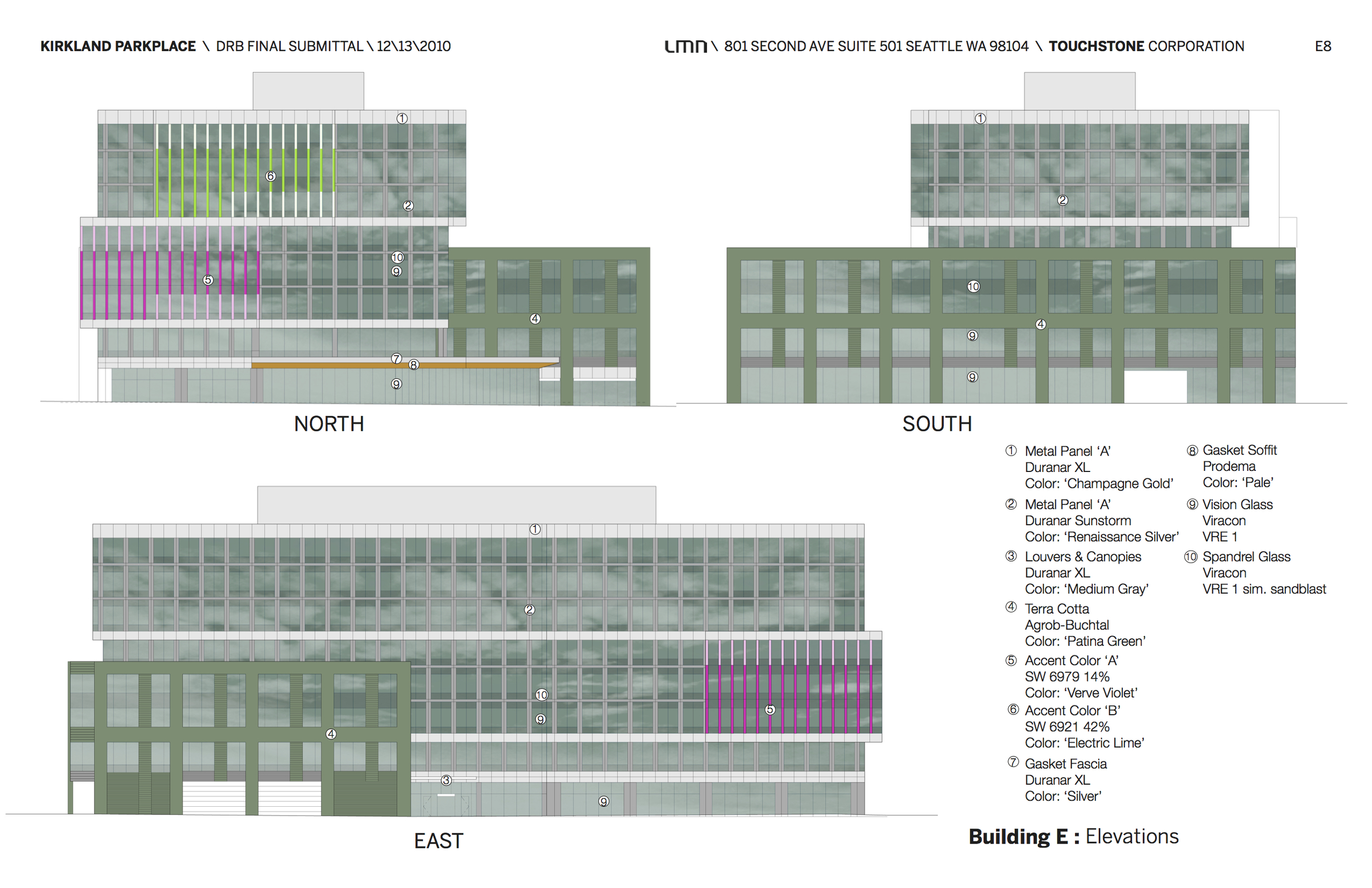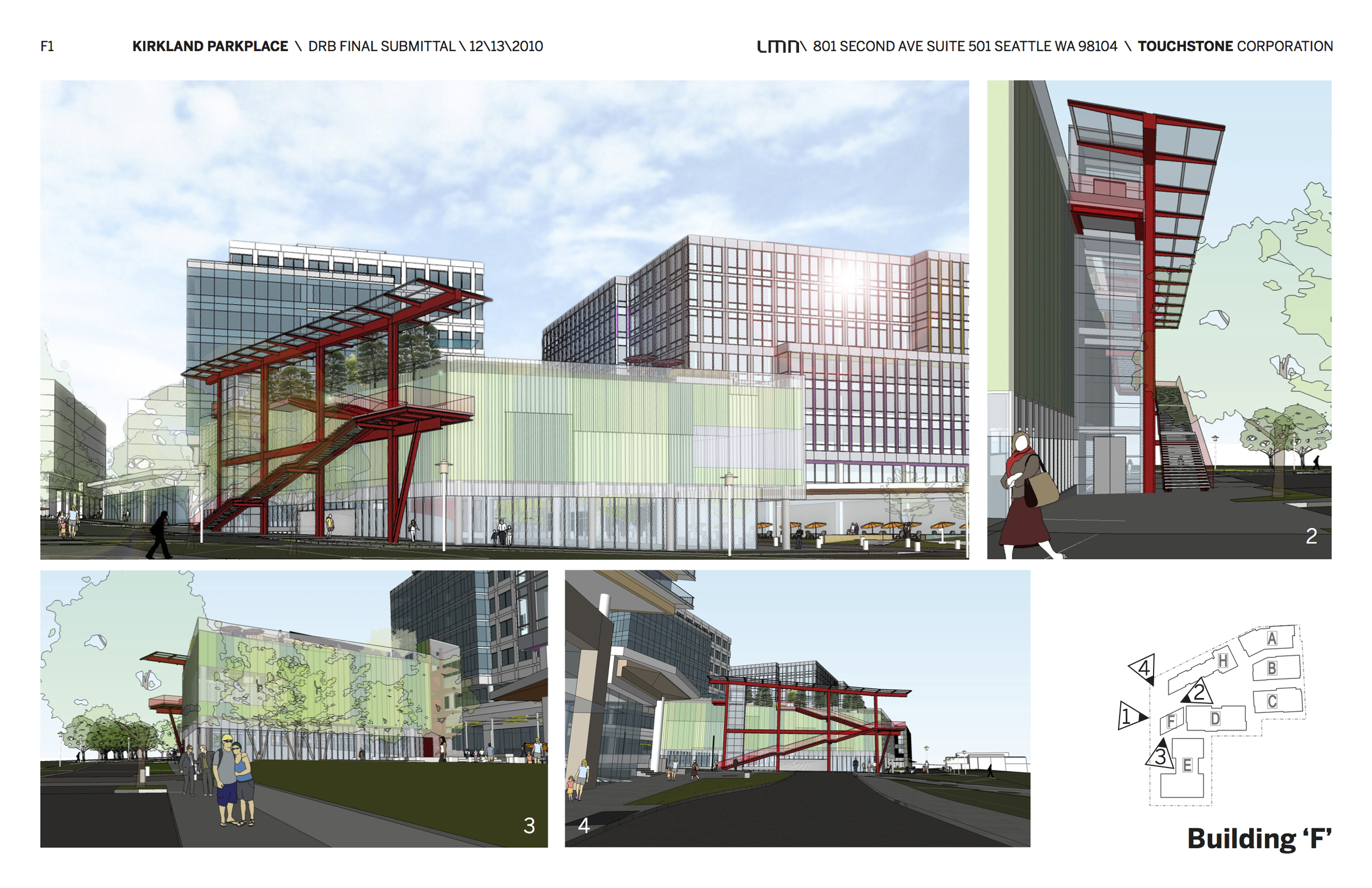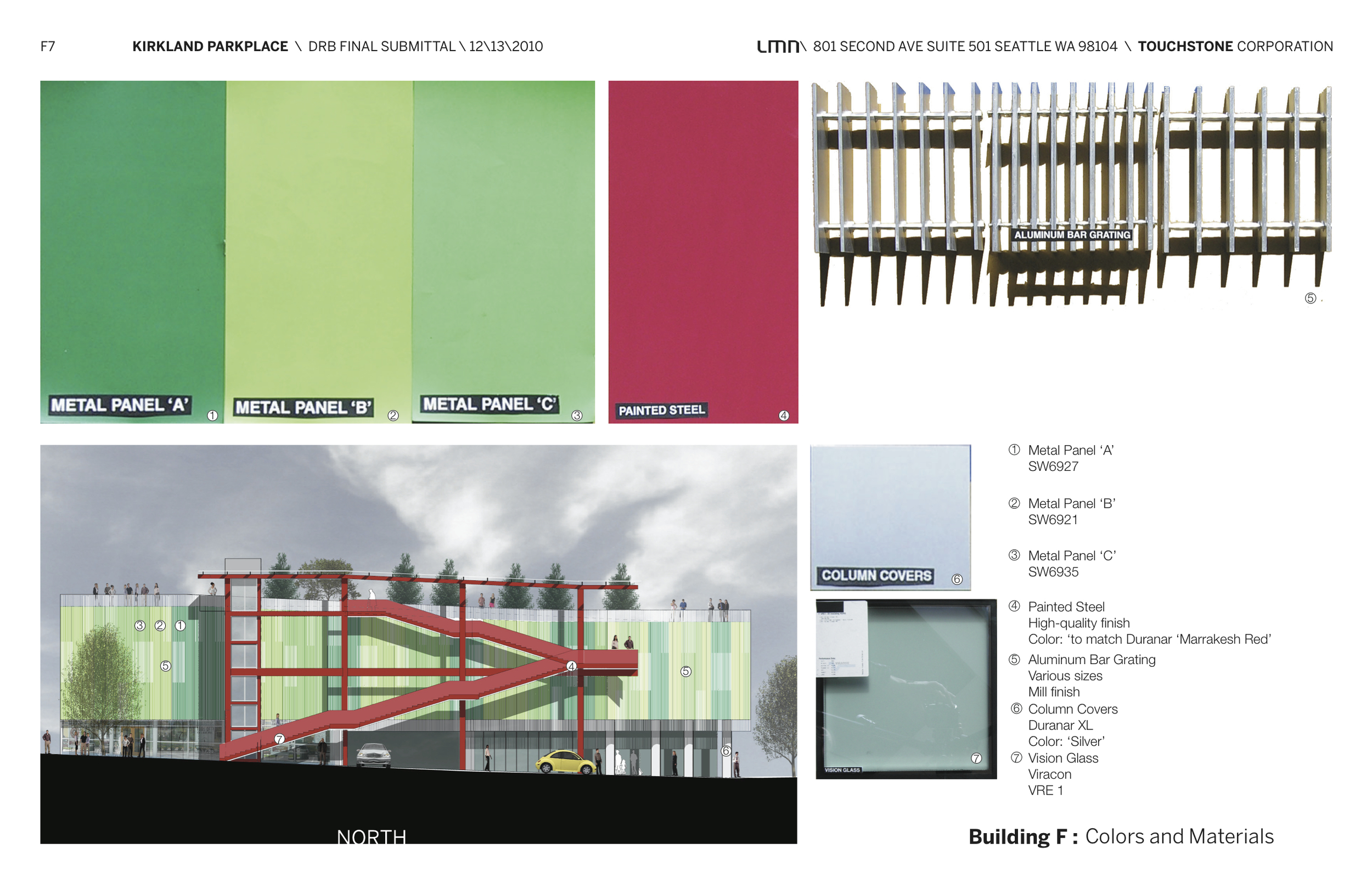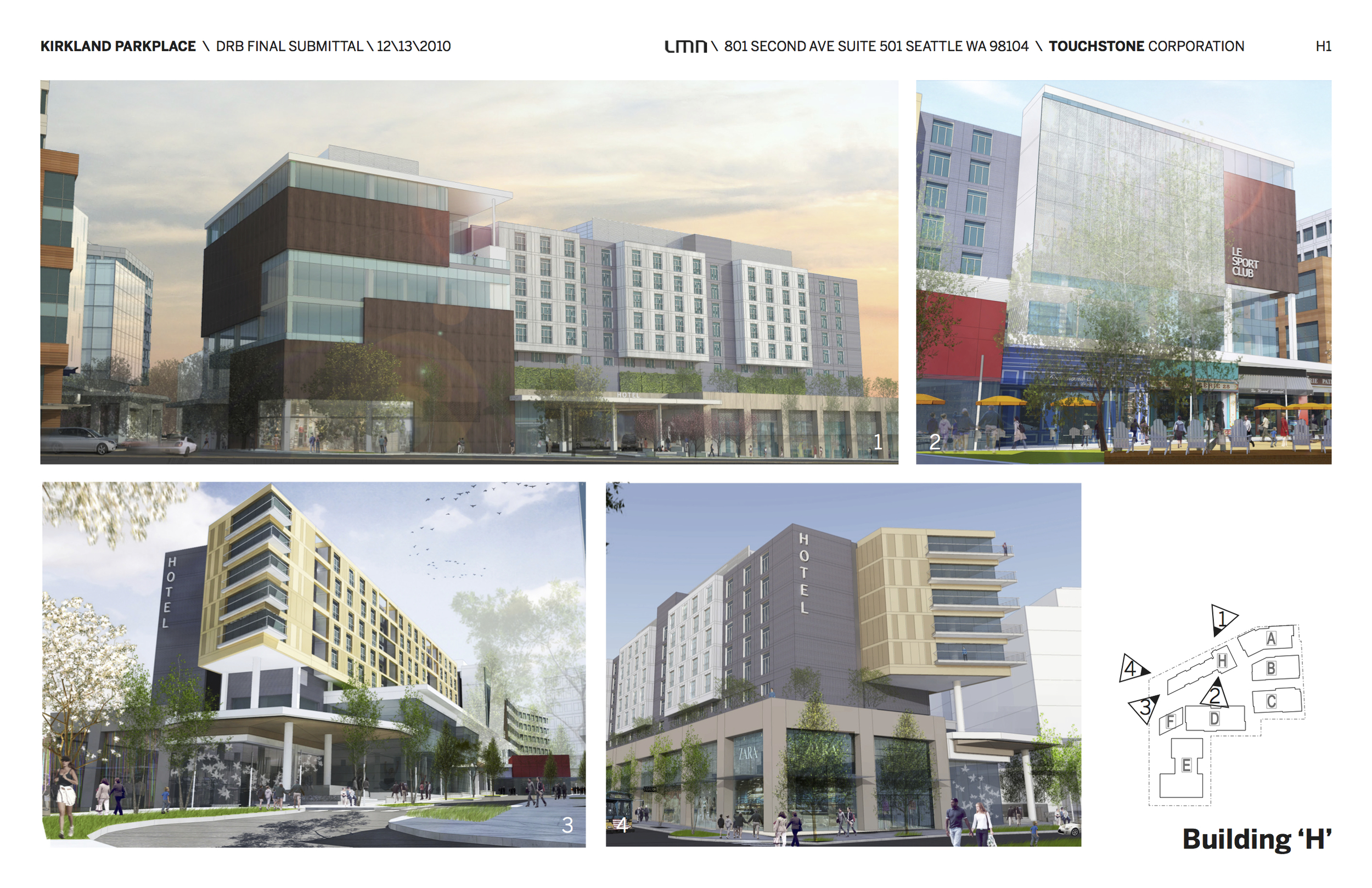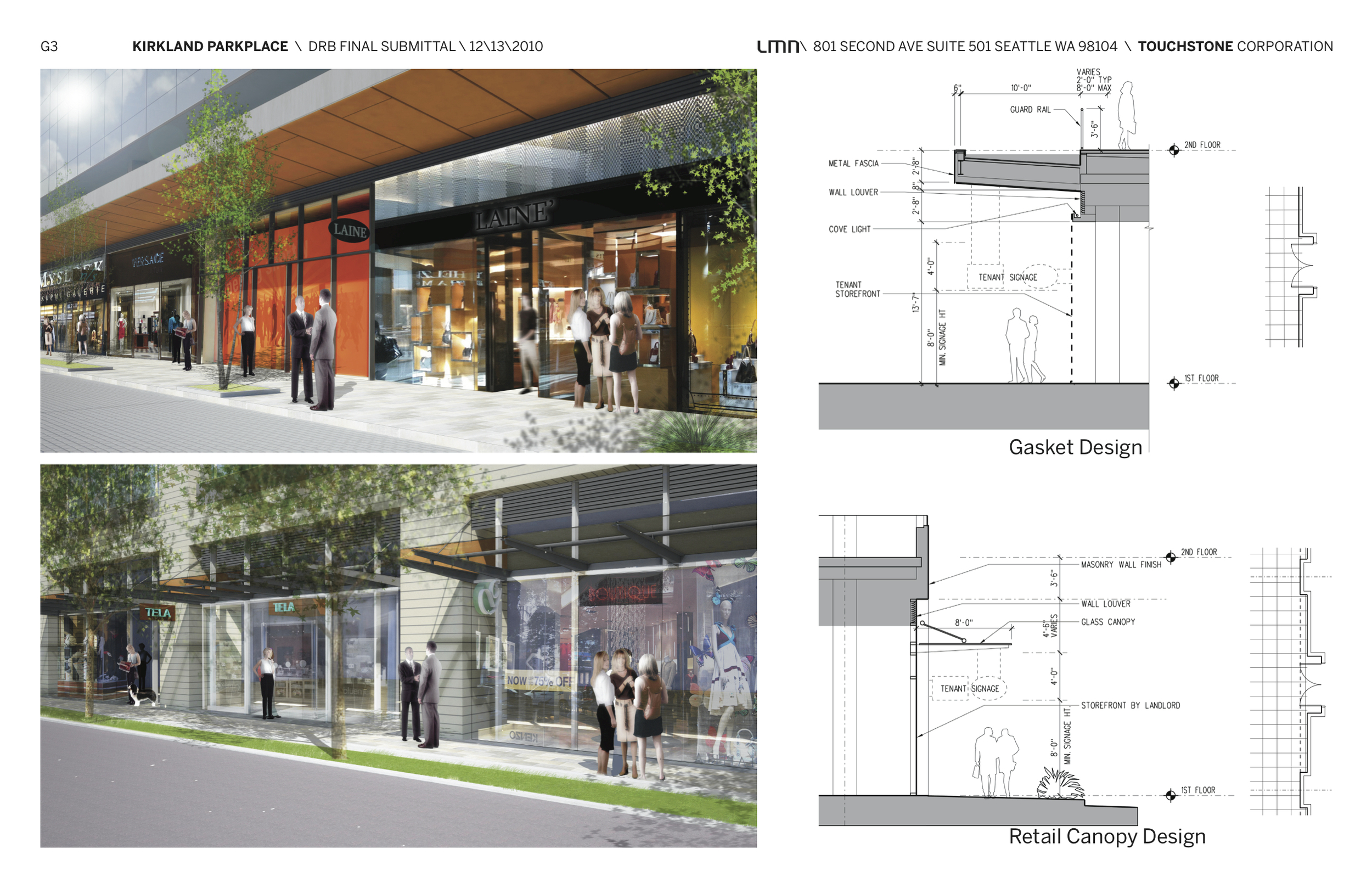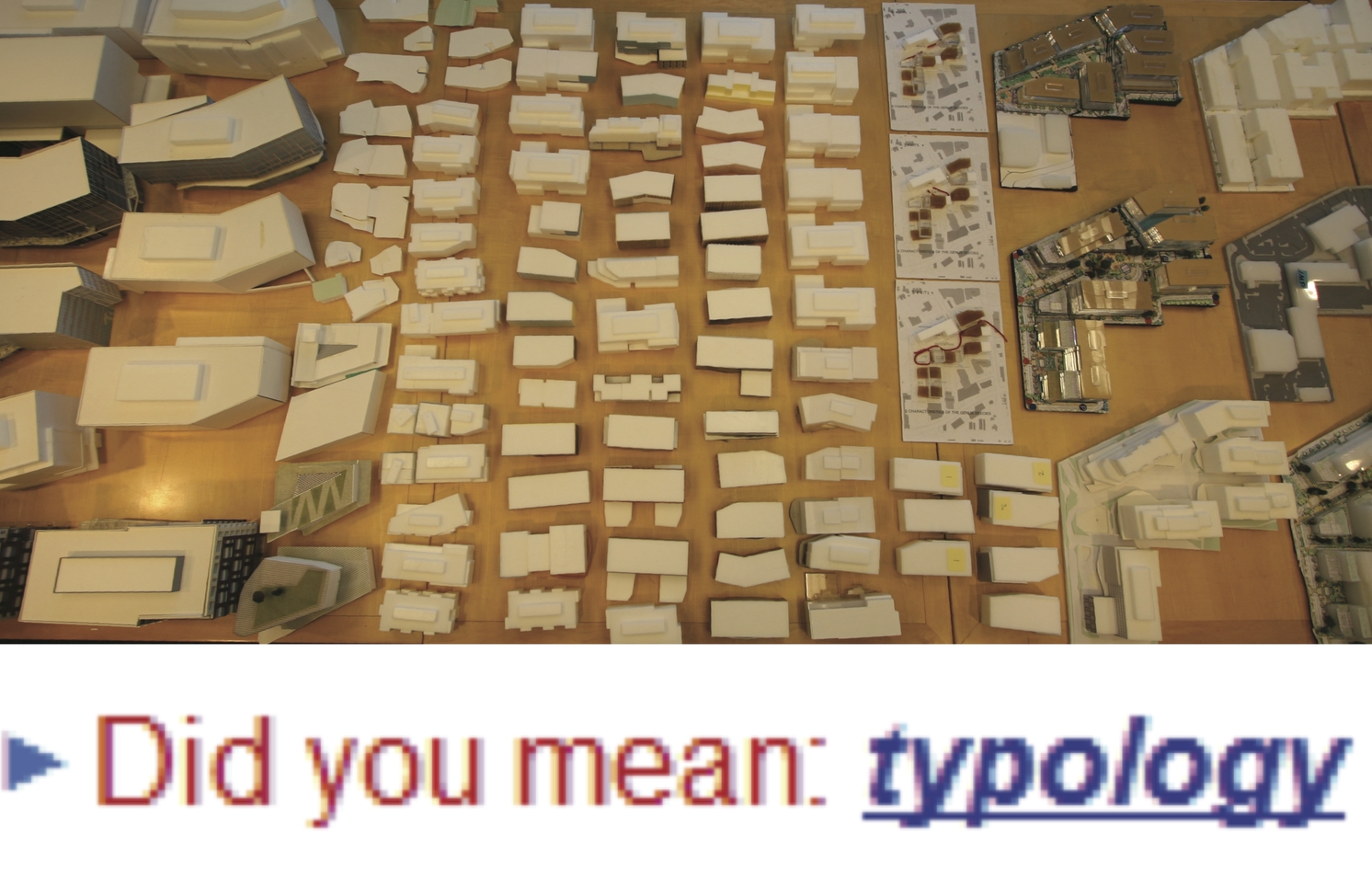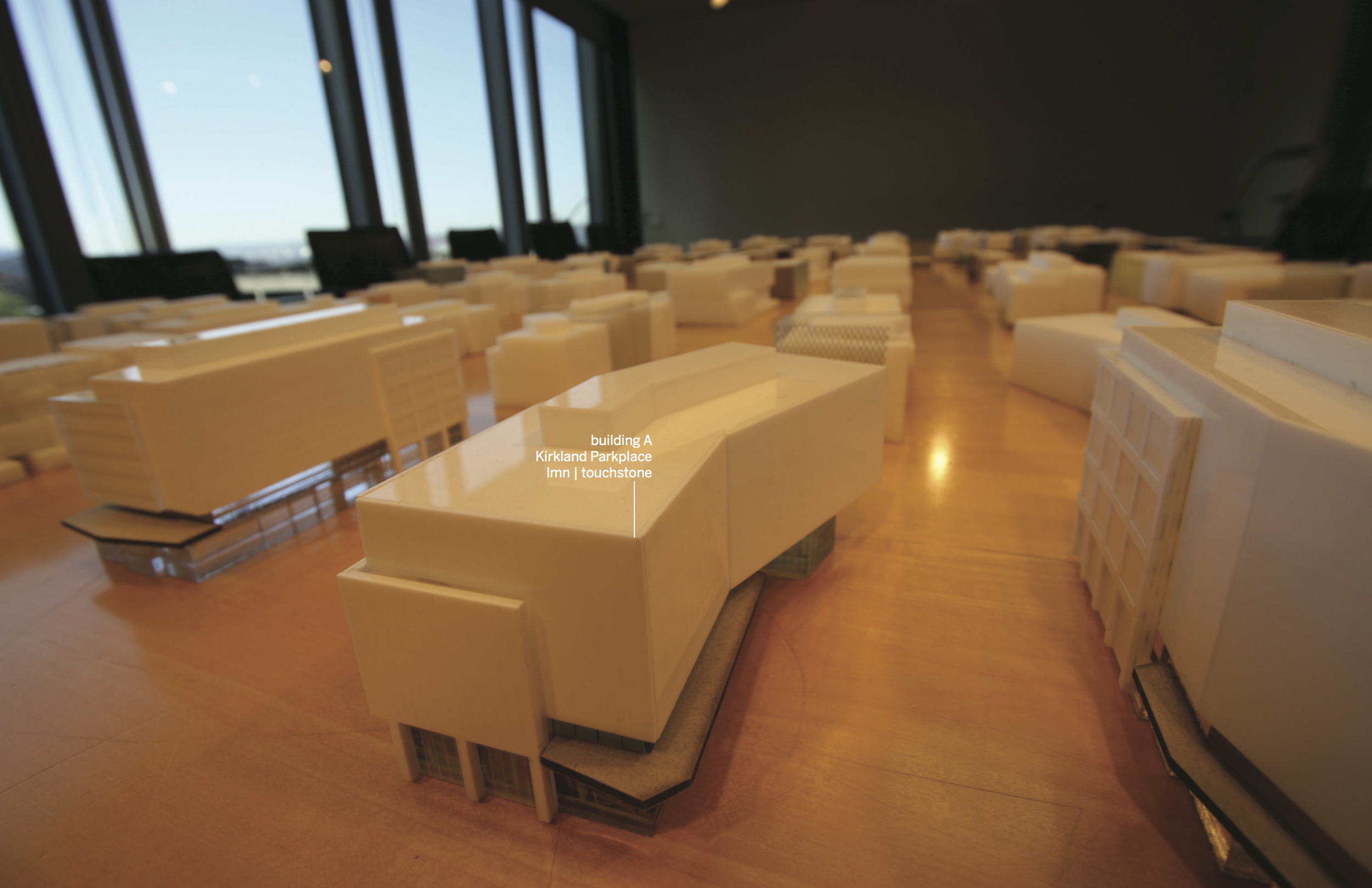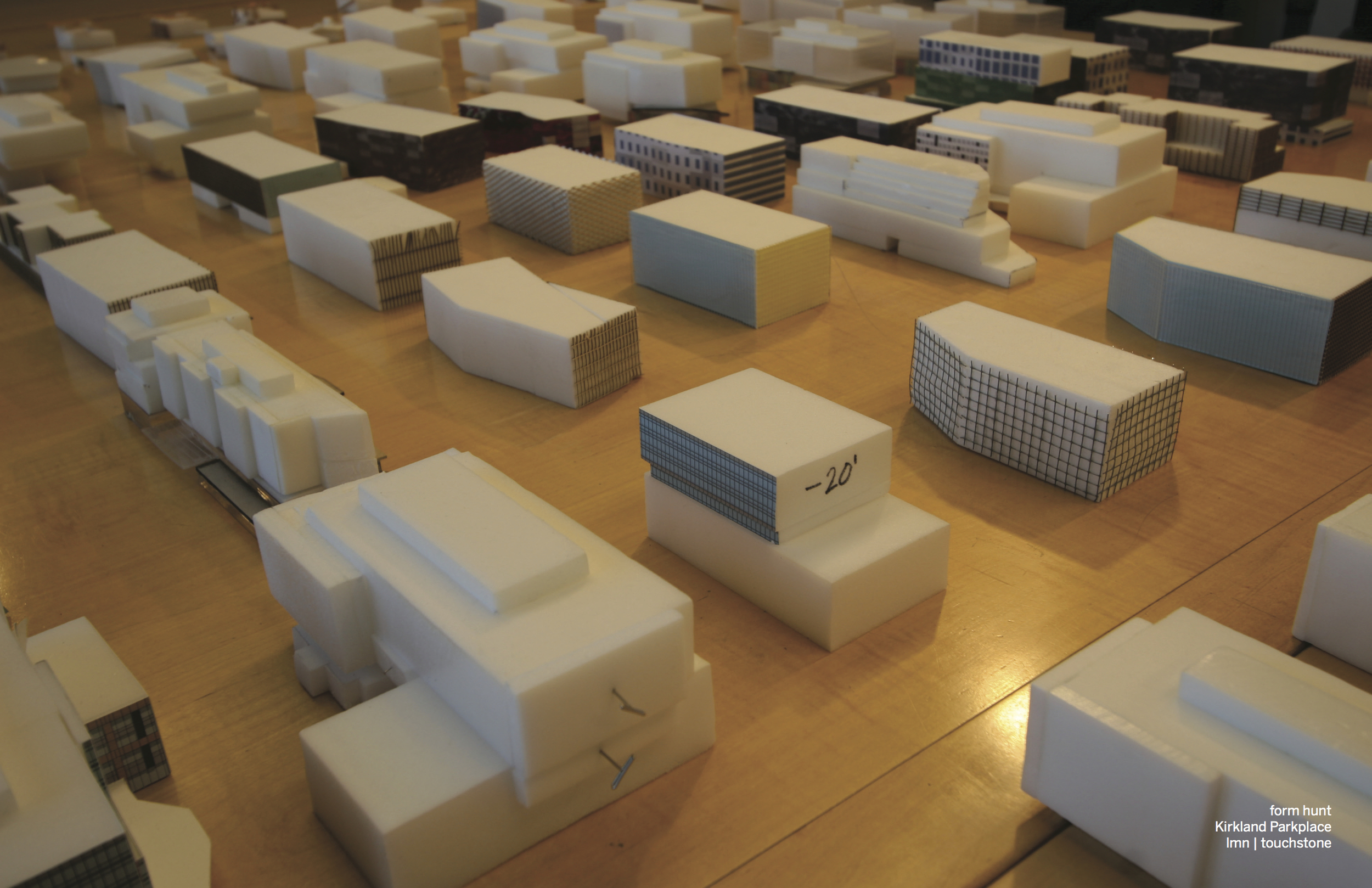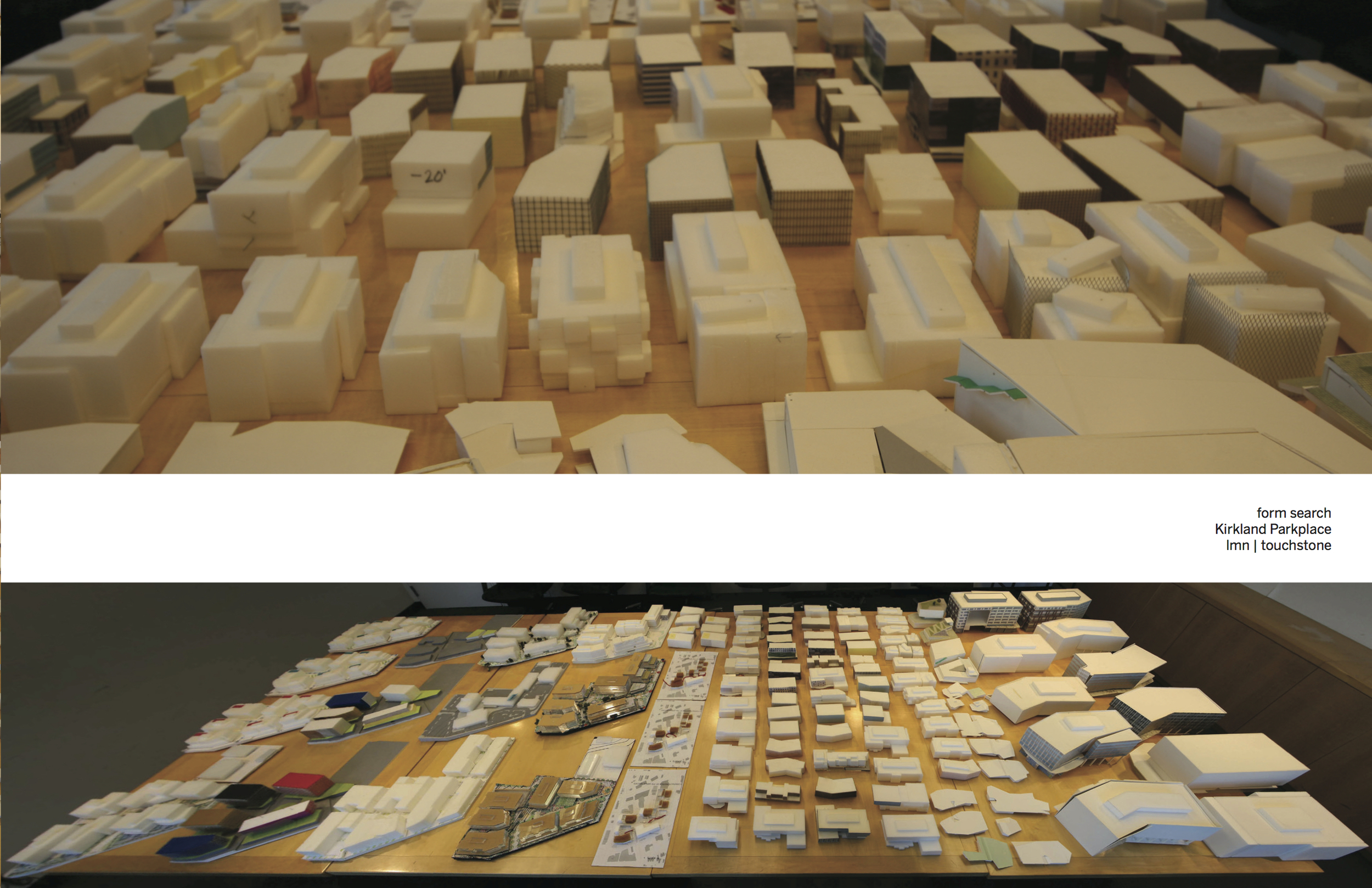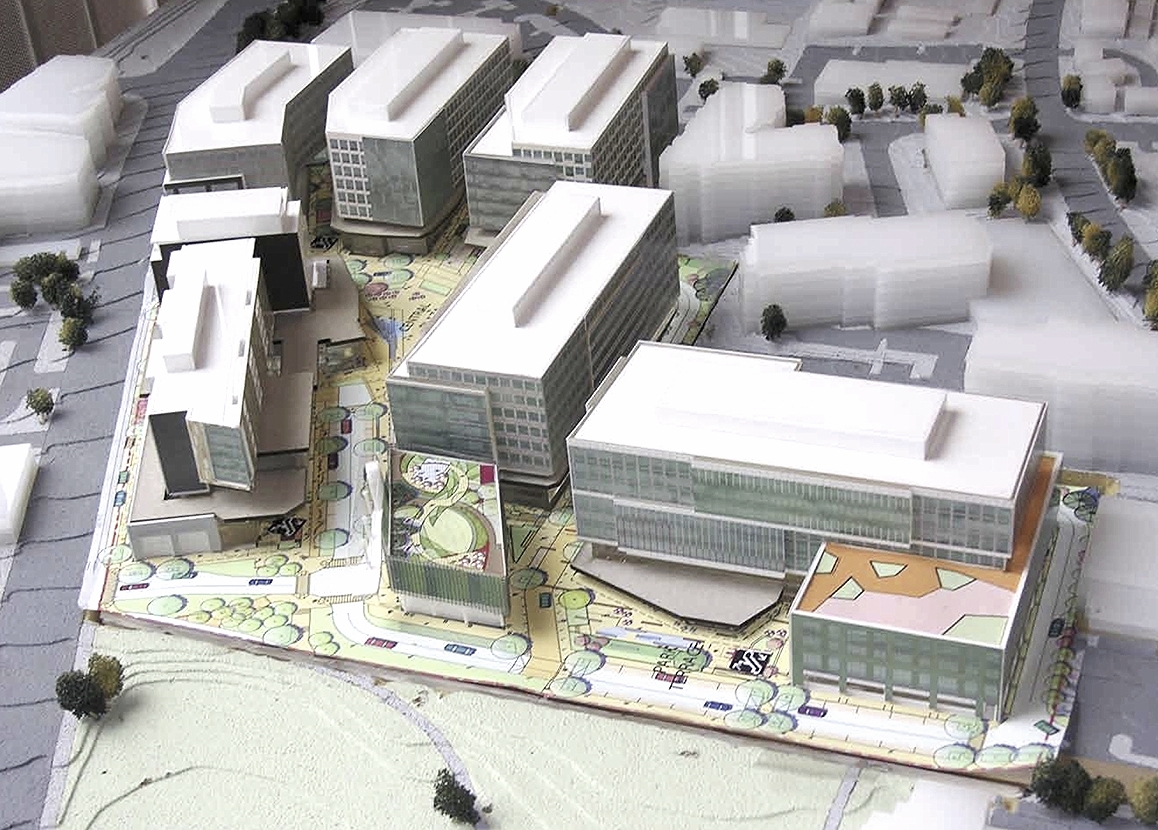Kirkland Parkplace
The basic configuration of the building masses on the site was established by the master planning process, which concluded at the end of 2008. Since that time, the architecture of the buildings has been developed. The primary design challenge with a large project such as Kirkland Parkplace is the balancing of the desire for a cohesive whole and sense of place with the requirement that the buildings have individual identities, and create a vibrant, varied urban environment.
LMN’s approach has been to create a design language consisting of a limited number of basic facade systems, each of which can be varied to create interest, while at the same time sharing enough ‘DNA” that the project is cohesive as an identifiable place. The differences in building massing and orientation alone create much of the impression of variation; the way buildings address the street or internal plazas afford unlimited viewing angles and pedestrian experiences. On top of this effect are layered various colors, materials and textures to further enrich the palettes of the office buildings and hotel.
The retail component of Kirkland Parkplace provides a large portion of the visual variety to be found in the project. The ‘gasket’ element, which visually separates the office buildings above from the retail facades, makes possible enormous diversity of retail expressions, which in turn create vibrant streetscapes. The combined effect of the office buildings, the retail facades, and the landscape/hardscape de- sign will be a complex, multi-layered urban environment that contains everything from narrow alleys to wide boulevards, intimate spaces and a large central plaza, with a west-facing terrace overlooking Peter Kirk Park.
Entitlements
The architectural design of Kirkland Parkplace on the following pages is the result of a design process that unfolded over a 3-year period of collaborative effort between the design team, Touchstone Corporation, and the City of Kirkland.
